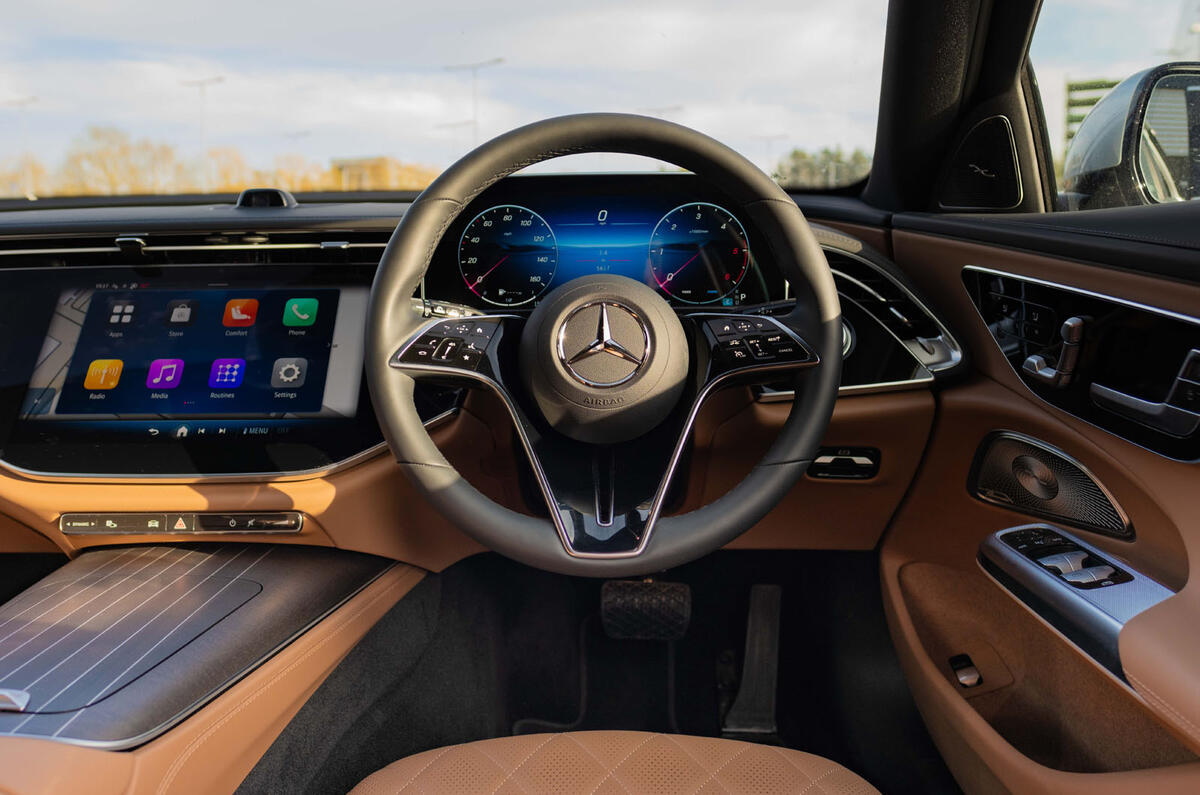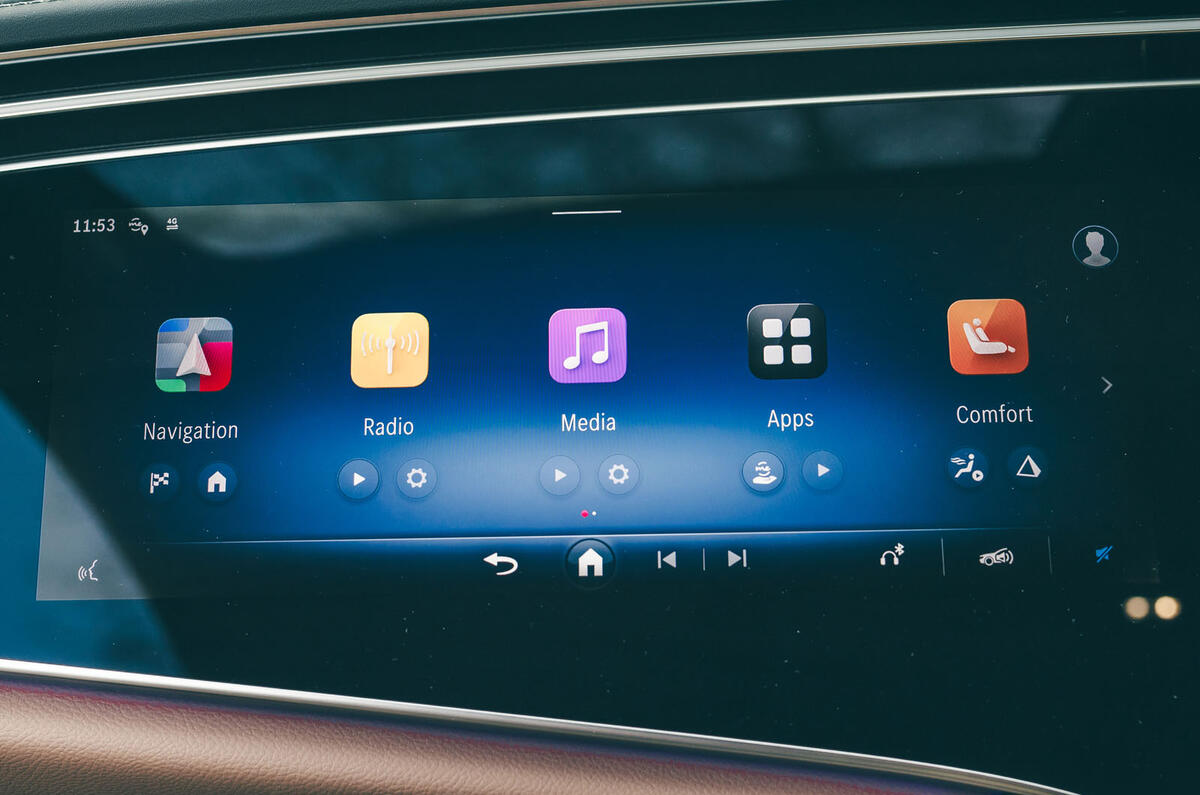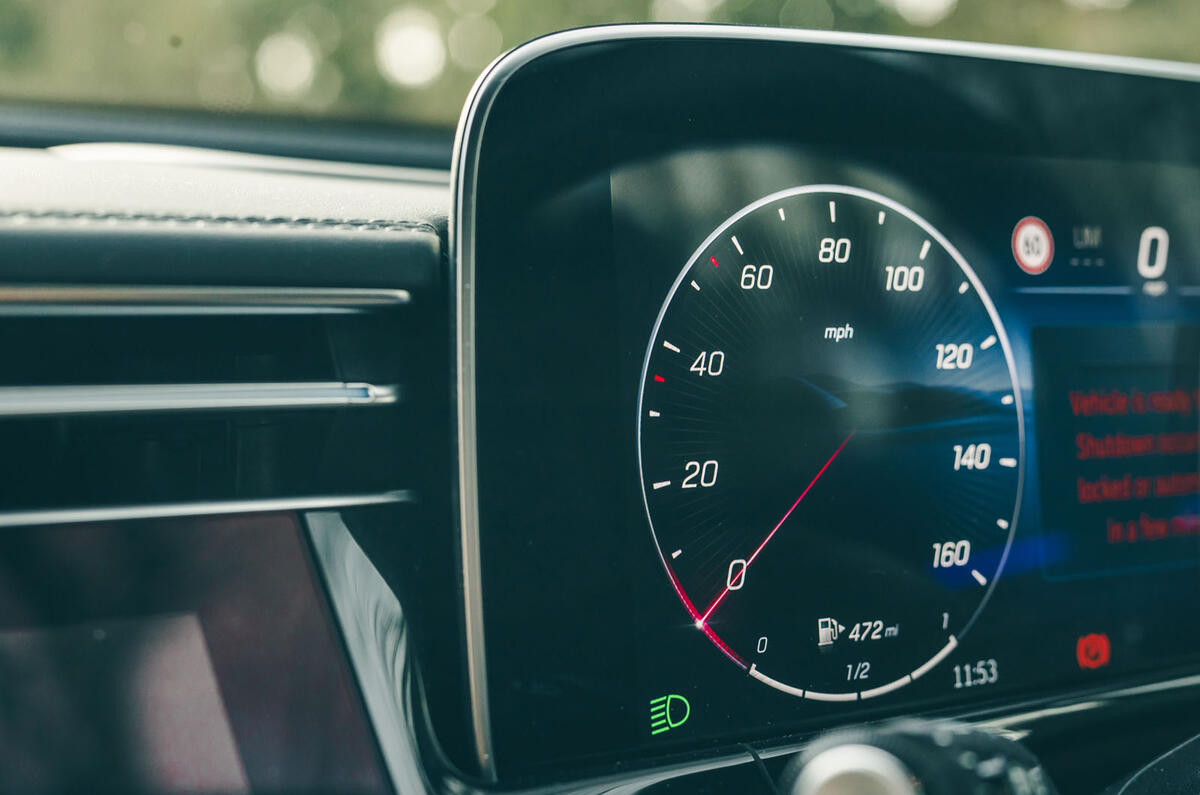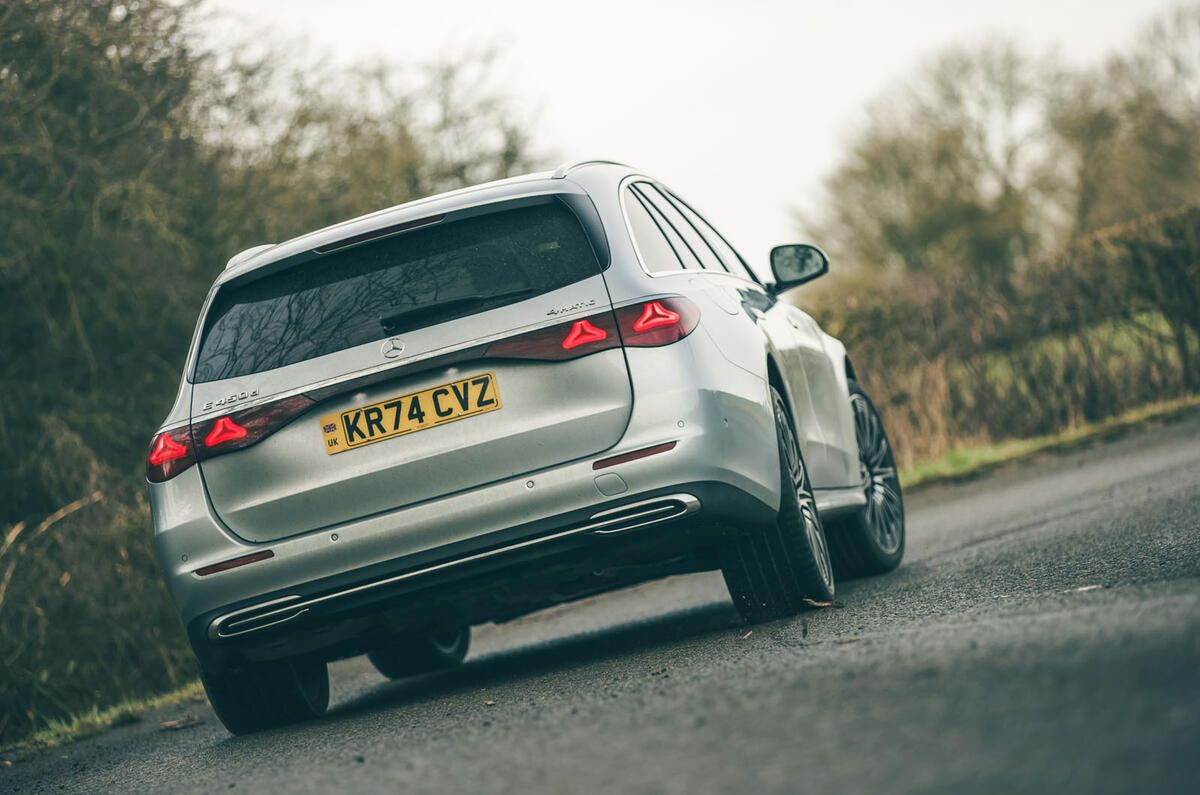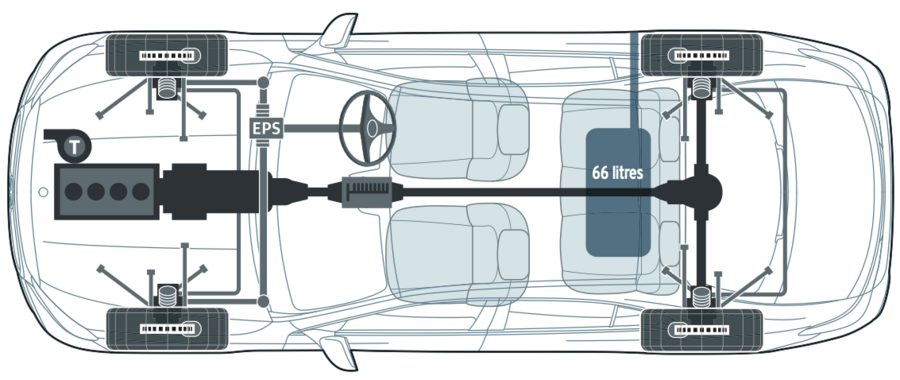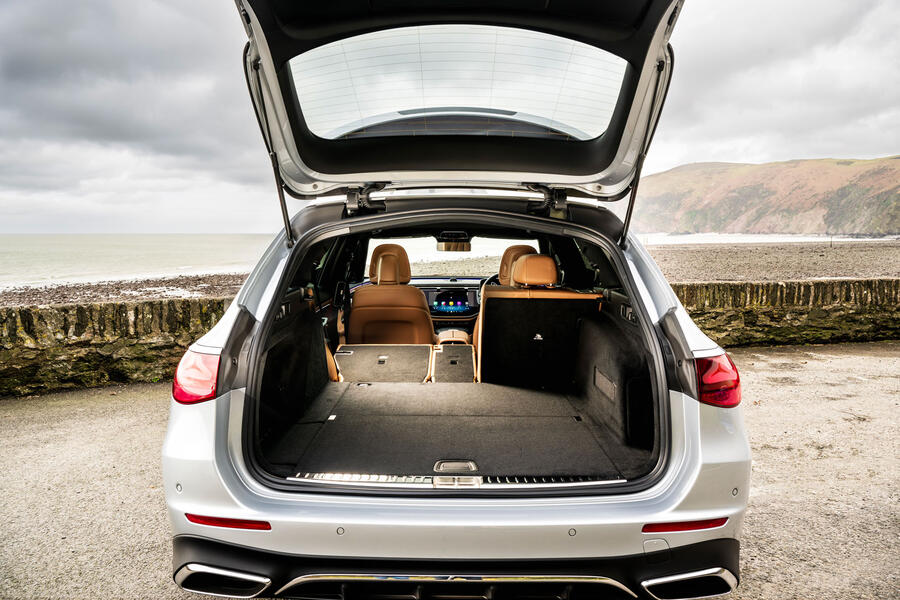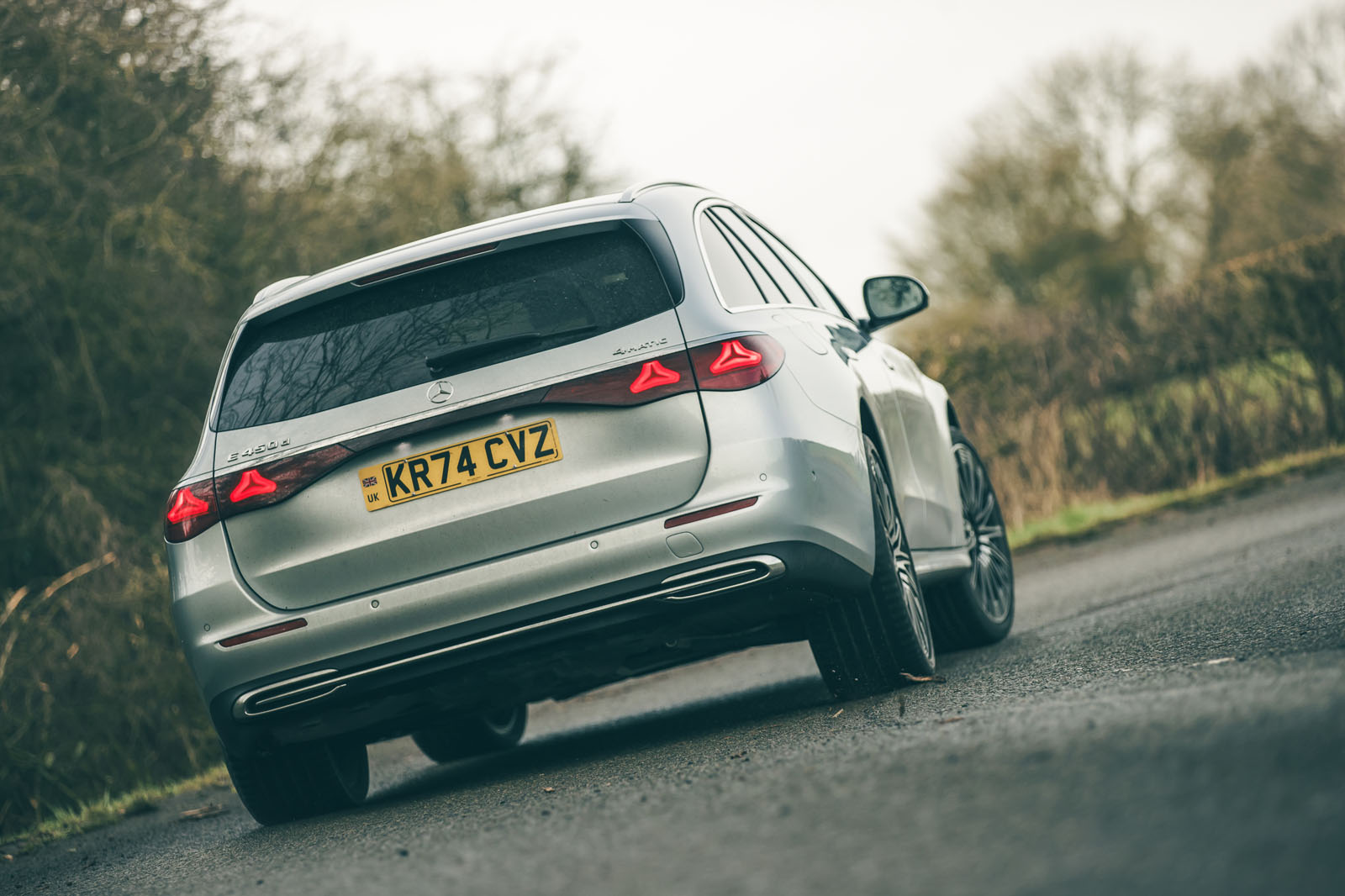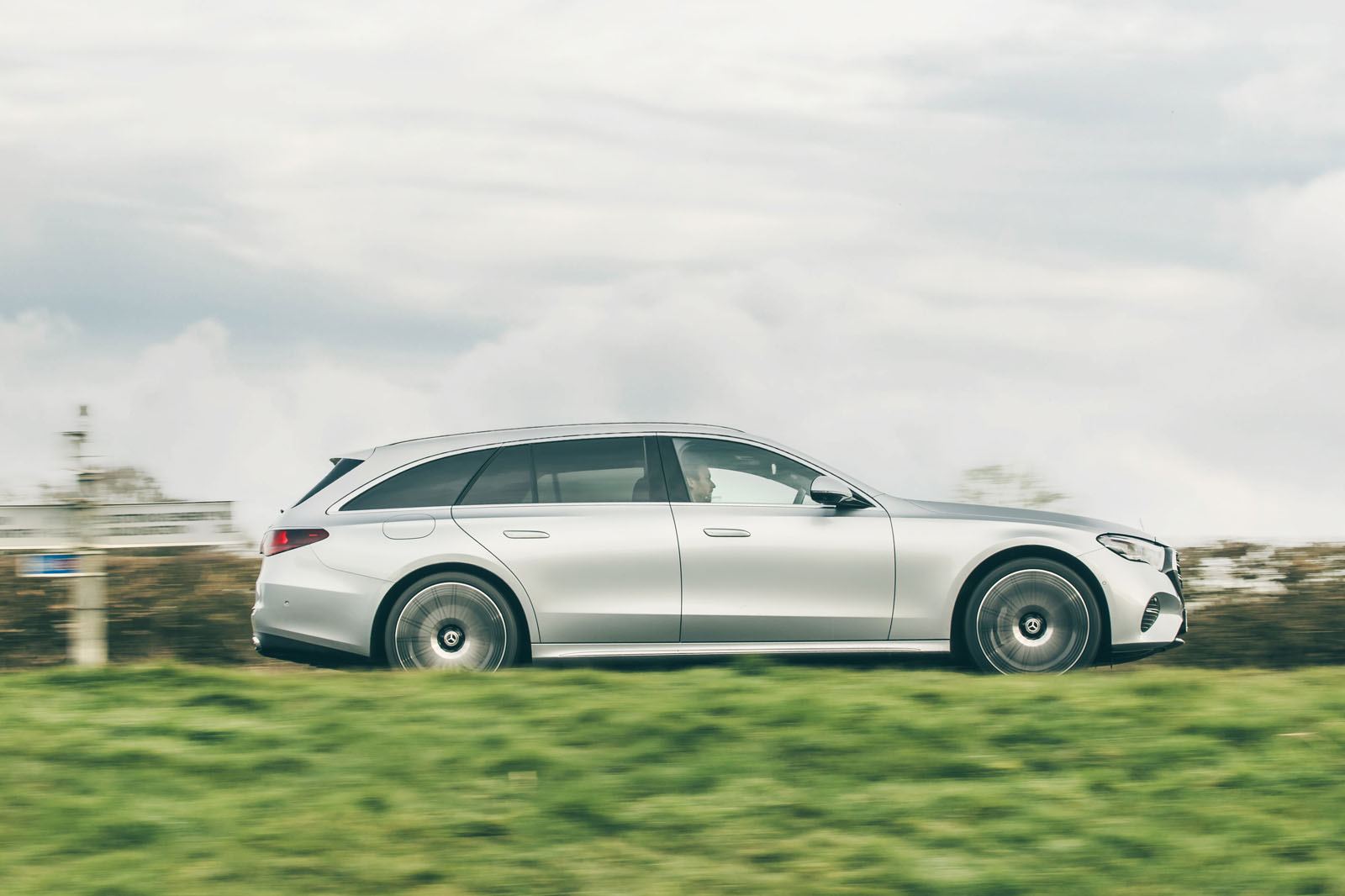The E450d Estate however, on its air springs, exhibits exactly the flavour of ride and handling balance you would want in a car like this. The ability of this chassis to waft along a motorway or a curving A-road, or to isolate you from the topological vagaries of a threadbare B-road, is excellent and close to S-Class levels. In short, there is no journey during which this old-school Mercedes won’t prove relaxing, restorative company (even lane keeping assistance and road sign alerts are easy to switch off, and the E450d otherwise has few if any ADAS-related irritations).
The handling also proved a pleasant surprise. There’s a neat balance here that isn’t overtly nose-led. A composed accuracy also means slotting the suspension and driveline into Sport mode and splicing through a few good bends can be quietly satisfying, not to mention very effective in terms of trimming your journey time – this is a quick point-to-point car. The steering is key to this – it’s largely devoid of granular feel but is expertly sped and weighted for this sort of application, making a large, heavy car very easy to place and even enjoy in the right moment.
The E220d saloon, meanwhile, also handles with a surprising keenness. It keeps the body level in corners and there's plenty of grip from the Pirelli P Zero tyres. Steering is excellent: it’s very quick, at 2.2 turns from lock to lock, but thanks to a well-judged variable ratio, it never feels nervous, and it weights up progressively in corners, even when you’re not pushing it particularly hard.
The 4Matic four-wheel drive system in the E450d runs with a little rear bias in its sportier modes, adding some welcome on-throttle neutrality when exiting corners.
Whether that is the right ride-and-handling compromise for a large exec saloon is debatable, mind. This is a near-two-tonne car that’s more than two metres wide across the mirrors, so while the handling is poised and satisfying, you would never truly call it fun, and it won’t let you forget that there's a lot of weight in play.
For the company that was the first to commercialise electronic stability control, the ESP system is somewhat lax: the rear axle can step out slightly when accelerating out of a tight junction. It’s by no means unsafe – even with the system off and in slippery conditions, you need to provoke it for anything dramatic to happen – but it might give some drivers something of a surprise.
Comfort & Isolation
The E-Class is a broadly comfortable car whatever version you opt for, and particularly so if you’re not a fan of the raised driving position of an SUV.
It doesn't sit you as low as one would be in the 5 Series, but that feels about right in a car that isn’t marketed as an overtly sporty saloon. The controls feel correctly positioned in relation to each other, and there’s extensive seat and steering wheel adjustment. The seats themselves are particularly supportive, if firmly padded.
There isn’t much wind noise in the car, but at motorway speeds road noise was definitely noticeable in our steel sprung E220d; less so in the air sprung E450d.
We recorded 67dBA at 70mph in the former – 2dBA more than in the Audi A6 we tested in 2022. But the E450d estate proved just as quiet as the recently updated Range Rover (62dbA), and was marginally quieter than it at 50mph.
Assisted driving notes
Every UK E-Class comes with a dashcam, blindspot monitoring and Distronic adaptive cruise control as standard, plus mandatory emergency braking, automatic lane keeping assistance and speed limit assist. Those last two work better than most but still get it wrong too often for comfort. They are quite easy to disable: a single tap of the screen or a press of a physical shortcut button and a tap suffice.
On AMG Line Premium and up, you can add the Driving Assistance Package Plus for £1695, which adds active lane following, automatic speed limit adoption and extended automatic restart on motorways.
Our car didn’t have the optional package, but even without, Mercedes’ adaptive cruise control is one of the best, with none of the irksome tendencies of some. It isn’t confused by cars in other lanes, and instead of sticking rigidly to a set following distance, it acts like a real driver when another car cuts in, at which point it gently slows rather than panic brakes.








